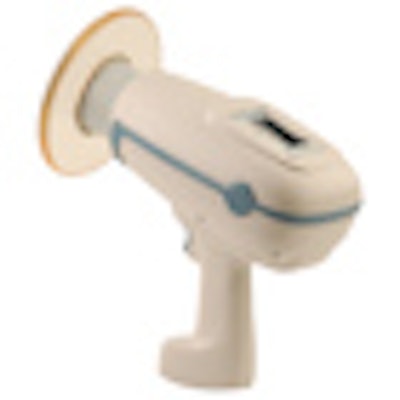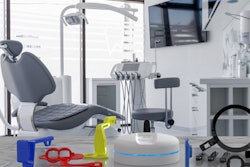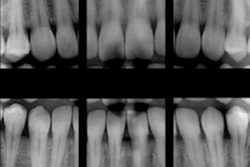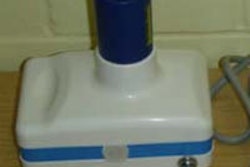
Dental care providers and their patients need not worry about radiation exposure when using the Nomad handheld intraoral xray device (Aribex), according to a new study in Health Physics (February 2012, Vol. 102:2, pp. 137-142).
More than 6,000 handheld intraoral x-ray units are in use today in the U.S. in dental radiography, veterinary medicine, forensic, military, and research applications, according to the study authors, from the University of North Carolina at Chapel Hill and DIQUAD, a company that offers dental x-ray quality and dose evaluation services.
Several vendors sell handheld intraoral x-ray devices, including Aribex, DigiMed, Sigma, Video Dental Concepts, and EXARO. But there have been concerns about the use and safety of these devices because the user is required to be in the room, holding the device, while the x-rays are taken.
Previous research
Aribex, which gained U.S. Food and Drug Administration (FDA) clearance for the Nomad in July 2005, has long maintained that its products differ from its competitors with regard to radiation exposure because of five unique features:
- Proprietary shielding around the x-ray tube to minimize leakage radiation
- A built-in leaded acrylic shield to protect the operator from backscatter
- A lead-shielded positioning indicating device (PID) or cone
- A 6-cm-diameter PID, which reduces the area irradiated to 56.2% of that for conventional x-ray units with 8-cm-diameter PIDs
- A 0.4-mm x-ray focal spot compared with a 0.6-mm focal spot for conventional units
Radiation studies conducted by Aribex have found that in a "worst case" situation -- taking 60 exposures per hour at a maximum exposure of 0.99 seconds each -- an operator has the potential to receive 3.6 mR/hr leakage at the hand. The maximum allowable radiation leakage, per FDA regulations, is 100 mR/hr.
Independent research also has found the Nomad to be safe. A 2008 study in Dentomaxillofacial Radiology (February 2008, Vol. 37:2, pp. 109-112), for example, concluded that "the Nomad presents risks that are no greater than with standard dental radiography units to the patient or operator, and the measured doses are well below recommended levels."
 |
Similarly, a study in the March 2009 Journal of Forensic Sciences (Vol. 54:2, pp. 415-421) found that operator exposure to backscatter radiation while using the Nomad was well below established occupation exposure limits.
And in a study in the September 2010 Forensic Science International (Vol. 201:1-3, pp. 112-117) that compared the Nomad with one wall-mounted system and two other mobile devices, researchers from Katholieke Universiteit Leuven concluded that "occupational dosimetry showed doses at the operator's hand being lowest with protective shielding (Nomad: 0.1 microGy)."
‘Significantly less'
For the Health Physics study, the researchers evaluated the differences in personal dosimetry measurements for dental facility staff under two conditions: using the Nomad and using a conventional, wall-mounted intraoral imaging system.
Nomad users were contacted by mail and asked if they used any type of radiation monitoring for their staff. In addition, each facility must have conducted radiation monitoring of their staff with conventional, wall-mounted x-ray systems prior to initiating use of the Nomad handheld system. The facilities also completed a questionnaire with information about their practice, such as number of exposures per month and the percentage made with the Nomad versus the conventional systems.
Personnel radiation dose records were obtained from 18 dental facilities using both the handheld system and a wall-mounted dental x-ray system, providing 661 individual dose measurements.
Most facilities in this study use Landauer Luxel OSL personnel dosimeters for staff dose measurements. Dental staff doses were also compared for the handheld and conventional systems using both film and digital imaging for the same facilities and staff members.
Doses for the handheld system was significantly less than for the wall-mounted systems, the researchers found. The average monthly dose for the handheld systems was 0.28 μSv, compared with 7.86 μSv (deep dose equivalent) for the wall-mounted systems, a difference that is statistically significant (p = 0.01).
However, "the results with handheld units of a different design may vary significantly from these results," the study authors wrote.
These findings indicate that there should be no concern about the use of Nomad handheld dental intraoral x-ray system, they added. In addition, "additional shielding efforts (e.g., wearing a lead apron) are not necessary based on the personnel exposures at actual dental facilities, as reported in this study," the researchers concluded.



















